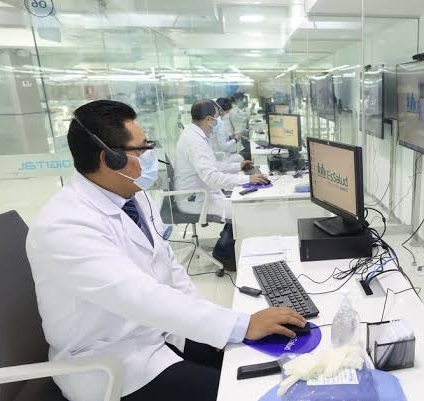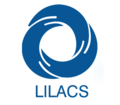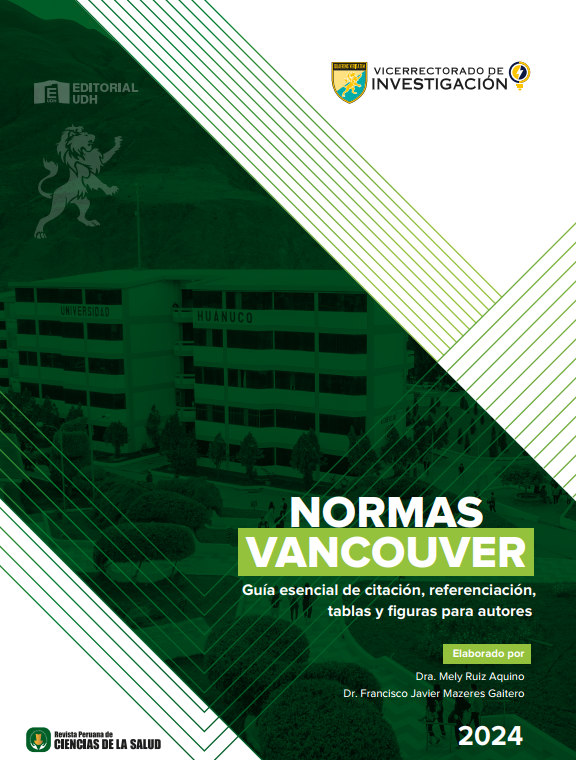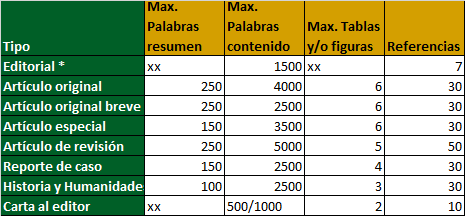Uso de telemedicina en pacientes de un hospital del Seguro Social de Salud del Norte del Perú, 2023
DOI:
https://doi.org/10.37711/rpcs.2025.7.3.5Palabras clave:
tecnología médica, servicio de salud, política de la salud, derecho a la salud, pacienteResumen
Objetivo. Determinar las características en la intención de uso de la telemedicina en pacientes del Hospital II Chocope del Seguro Social (EsSalud), en la región de La Libertad, Perú, 2023. Métodos. El enfoque fue cuantitativo, transversal y correlacional. La población de estudio estuvo conformada por 2746 pacientes de la consulta externa, y la muestra por 338 pacientes. La técnica fue la encuesta y el instrumento fueron dos cuestionarios válidos y confiables. El análisis inferencial incluyó el uso de la regresión lineal simple. Resultados. Se observó que el nivel de la percepción respecto a los factores relacionados con el consumidor, con el servicio y el tecnológico, tuvo una predominancia del nivel medio según el 49,1 %, 52,4 % y 47,9 % de pacientes, respectivamente. Así mismo, el nivel de intención de uso de la telemedicina tuvo una predominancia del nivel medio, según el 49,1 %. Se encontró una correlación directa y de grado alto entre los factores evaluados y la intención de uso de la telemedicina (p < 0,001). Conclusiones. La adopción de la telemedicina depende de múltiples factores, incluyendo el apoyo institucional, la calidad percibida del servicio, la facilidad de uso, la confianza del paciente y la tecnología disponible.
Descargas
Referencias
1. Ferucci ED, Holck P, Day GM, Choromanski TL, Freeman SL. Factors associated with use of telemedicine for follow-up of rheumatoid arthritis. Arthritis Care Res (Hoboken) [Internet]. 2020 [Consultado el 8 de mayo de 2025];72(10):1404-9. https://doi.org/10.1002/acr.24049
2. Adepoju OE, Tran L, Agwuncha R, Chae M, Franco-Castano J, Angelocci T, et al. Associations between patient- and provider-level factors, and telemedicine use in family medicine clinics. J Am Board Fam Med. [Internet]. 2022 [Consultado el 8 de mayo de 2025];35(3):457-64. https://doi.org/10.3122/jabfm.2022.03.210416
3. Du Y, Zhou Q, Cheng W, Zhang Z, Hoelzer S, Liang Y, et al. Factors influencing adoption and use of telemedicine services in rural areas of China: mixed methods study. JMIR Public Health Surveill. [Internet]. 2022 [Consultado el 8 de mayo de 2025];8(12):e40771. https://doi.org/10.2196/40771
4. Mackwood MB, Tosteson TD, Alford-Teaster JA, Curtis KM, Lowry ML, Snide JA, et al. Factors influencing telemedicine use at a Northern New England cancer center during the COVID-19 pandemic. JCO Oncol Pract. [Internet]. 2022 [Consultado el 8 de mayo de 2025];18(7):e1141-53. https://doi.org/10.1200/OP.21.00750
5. Ruiz-Yngol EG, Flores Sotelo WS. Evolución de la telemedicina en Perú y otros países de América Latina. Más Vita [Internet]. 2022 [Consultado el 8 de mayo de 2025];4(3):130-44. https://doi.org/10.47606/acven/mv0137
6. Udai Quispe-Juli C. Consideraciones éticas para la práctica de la telemedicina en el Perú: desafíos en los tiempos de COVID-19. Rev Cuba Inf Cienc Salud [Internet]. 2021 [Consultado el 8 de mayo de 2025];32(2):1676. Disponible en: https://creativecommons.org/licenses/by-nc/4.0/deed.es_ES
7. Instituto Nacional de Estadística e Informática (INEI). Perú: Accesos a Internet según nivel de educación alcanzado, 2020. Nota de prensa N.º 038-2021. [Internet]. Lima: INEI; 2021. [Consultado el 8 de mayo de 2025]. Disponible en: http://m.inei.gob.pe/media/MenuRecursivo/noticias/nota-de-prensa-no-038-2021-inei.pdf
8. Gobierno del Perú. Más de 14 millones de atenciones por telemedicina se realizaron durante el 2020 [Internet]. 2021 [Consultado el 8 de mayo de 2025]. Disponible en: https://www.gob.pe/institucion/minsa/noticias/322744-mas-de-14-millones-de-atenciones-por-telemedicina-se-realizaron-durante-el-2020
9. Requejo L. Teleconsulta: ¿cómo avanza la implementación del servicio y qué se requiere para alcanzar la optimización? El Comercio [Internet]. 16 de julio de 2021 [Consultado el 8 de mayo de 2025]. Disponible en: https://elcomercio.pe/economia/teleconsulta-como-avanza-la-implementacion-del-servicio-y-que-se-requiere-para-alcanzar-la-optimizacion-telemedicina-minsa-teleconsulta-essalud-noticia/
10. Ferucci ED, Arnold RI, Holck P. Factors associated with telemedicine use for chronic disease specialty care in the Alaska Tribal Health System, 2015–2019. Telemed J E Health [Internet]. 2022 [Consultado el 8 de mayo de 2025];28(5):682-9. https://doi.org/10.1089/tmj.2021.0131
11. Fuentes W, Novaro E. Factores que limitan el uso de la telemedicina en atenciones primarias del público millennials [Internet]. Lima: ESAN; 2021 [Consultado el 8 de mayo de 2025]. Disponible en: https://repositorio.esan.edu.pe/handle/20.500.12640/3097
12. Al-Anezi FM. Factors influencing decision making for implementing e-health in light of the COVID-19 outbreak in Gulf Cooperation Council countries. Int Health [Internet]. 2021 [Consultado el 8 de mayo de 2025];14(1):53-63 https://doi.org/10.1093/inthealth/ihab003
13. Harst LH. Theories predicting end-user acceptance of telemedicine use: systematic review. J Med Internet Res. [Internet]. 2019 [Consultado el 8 de mayo de 2025];21(5):e13117. https://www.jmir.org/2019/5/e13117/
14. Reed ME, Huang J, Graetz I, Lee C, Muelly E, Kennedy C, et al. Patient characteristics associated with choosing a telemedicine visit vs office visit with the same primary care clinicians. JAMA Netw Open [Internet]. 2020 [Consultado el 8 de mayo de 2025];3(6):e205873. doi:10.1001/jamanetworkopen.2020.5873
15. Chung D, Chun SG. Social media use in health care: will it be embraced by millennials? Issues Inf Syst. [Internet]. 2017 [Consultado el 8 de mayo de 2025];18(2):206-14. https://doi.org/10.48009/2_iis_2017_206-214
16. Pereyra J, Jiménez A, Saigí F. Determinants of the intention to use telemedicine in a healthcare organization. J Healthc Qual Res. [Internet]. 2018 [Consultado el 8 de mayo de 2025];33(2):319-28. https://doi.org/10.1016/j.jhqr.2018.08.004
17. Tamilmani K, Rana NP, Dwivedi YK. A systematic review of citations of UTAUT2 article and its usage trends. En: Saeed K, Ribeiro V, Saadi FP, editores. Digital nations – smart cities, innovation, and sustainability. Berlín: Springer Nature; 2017. p. 38-49. https://link.springer.com/chapter/10.1007/978-3-319-68557-1_5
18. Venkatesh V, Morris MG, Davis GB, Davis FD. User acceptance of information technology: toward a unified view. MIS Q. [Internet]. 2003 [Consultado el 8 de mayo de 2025];27(3):425-78. https://doi.org/10.2307/30036540
19. Jewer J. Patients’ intention to use online postings of ED wait times: a modified UTAUT model. Int J Med Inform. [Internet]. 2018 [Consultado el 8 de mayo de 2025];112:34-9. https://doi.org/10.1016/j.ijmedinf.2018.01.008
20. Alalwan AA, Dwivedi YK, Rana NP. Factors influencing adoption of mobile banking by Jordanian bank customers: extending UTAUT2 with trust. Int J Inf Manage [Internet]. 2017 [Consultado el 8 de mayo de 2025];37(3):99-110. https://doi.org/10.1016/j.ijinfomgt.2017.01.002
21. Limayem M, Hirt SG, Cheung CMK. How habit limits the predictive power of intention: the case of information systems continuance. MIS Q. [Internet]. 2007 [Consultado el 8 de mayo de 2025];31(4):705-37. https://www.jstor.org/stable/25148817
22. Creswell JW. Research design: qualitative, quantitative, and mixed methods approaches. 4th ed. Thousand Oaks, CA: Sage Publications; 2014.
23. Babbie E. The practice of social research. 14th ed. Boston, MA: Cengage Learning; 2016.
24. San Martín H, Herrero Á. Influence of the user’s psychological factors on the online purchase intention in rural tourism: integrating innovativeness to the UTAUT framework. Tour Manag. [Internet]. 2012 [Consultado el 8 de mayo de 2025];33(2):341-50. https://doi.org/10.1016/j.tourman.2011.04.003
25. Monraz-Pérez S, Pacheco-Lopez A, Castorena-Maldonado A, Benítez-Pérez RE, Tririón-Romero I, López-Estrada E del C, et al. Telemedicina durante la pandemia por COVID-19. Neumol, cir. Torax [Internet]. 2021 [Consultado el 8 de mayo de 2025];80(2). https://doi.org/10.35366/100996
26. Maris A, Yousf A, van Ramshorst S, Ravesteyn P. Critical success factors for adopting telemedicine applications. Commun IIMA. [Internet]. 2017 [Consultado el 8 de mayo de 2025];15(4):1-11. Disponible en: https://scholarworks.lib.csusb.edu/ciima/vol15/iss4/6
27. Gupta A, Cuff P, Dotson-Blake K, Schwartzberg J, Sheperis C, Talib Z. Reimagining patient-centered care during a pandemic in a digital world: a focus on building trust for healing. NAM Perspect. [Internet] 2021 [Consultado el 8 de mayo de 2025]. doi:10.31478/202105c
28. Fouquet S, Miranda A. Asking the right questions—human factors considerations for telemedicine design. Curr Allergy Asthma Rep. [Internet]. 2020 [Consultado el 8 de mayo de 2025];20(12):1-7. https://doi.org/10.1007/s11882-020-00965-x
29. Guevara O. Usabilidad de los servicios de telemedicina MINSA y EsSalud percibida por pacientes hipertensos, Lambayeque, Perú – 2021 [Internet]. Chiclayo: Universidad Católica Santo Toribio de Mogrovejo; 2023 [Consultado el 8 de mayo de 2025]. Disponible en: https://tesis.usat.edu.pe/handle/20.500.12423/5937
30. Cardozo D. Factores asociados al uso de telemedicina del personal de una microred – Chiclayo [Internet]. Chiclayo: Universidad César Vallejo; 2022 [Consultado el 8 de mayo de 2025]. Disponible en: https://repositorio.ucv.edu.pe/handle/20.500.12692/97692
31. Venkatesh V, Thong JYL, Xu X. Consumer acceptance and use of information technology: extending the unified theory of acceptance and use of technology. MIS Q. [Internet]. 2012 [Consultado el 8 de mayo de 2025];36(1):157-78. https://doi.org/10.25300/MISQ/2012/36.1.07

Publicado
Número
Sección
Licencia
Derechos de autor 2025 Luis Miguel Vega Cruz

Esta obra está bajo una licencia internacional Creative Commons Atribución 4.0.





















